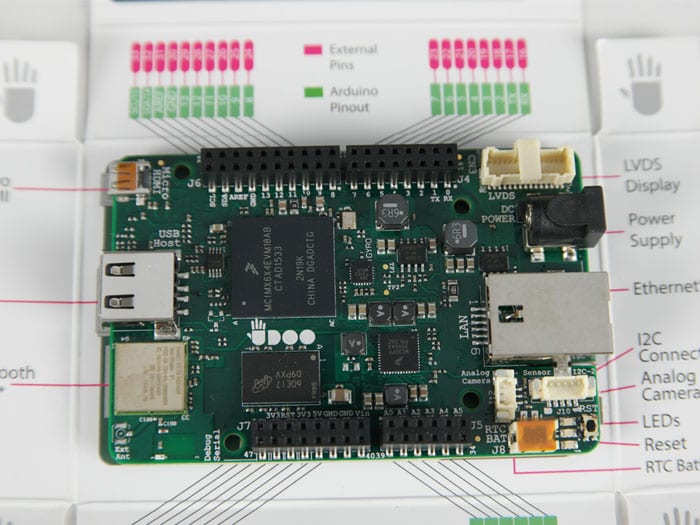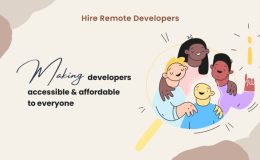If you’re in the mood for tinkering around, these days should be like Disneyland for you.
So many boards, so many projects! What started as a fork of Hernando Barragán’s invention – you know the secret history of Arduino, do you? – has powered the world’s creativity and is now used in the most advanced labs on Earth – one for all, CERN – and even out of the Earth – NASA last year sent an Arduino into space.
Then, 6 years later, Raspberry Pi came. As any project that is bound to change the world, it began as a little initiative by Eben Upton, growing over time from the very first 50 alpha boards to over 10 million units sold.
One year later and you can find UDOO on Kickstarter: a quad core computer and an Arduino, all in one board. Take into account that at time the alternative, in the Mini PC space, was Raspberry Pi, a single core computer. The idea of Arduino and a quad core computer in one board created an instant sensation: after all, for most projects you need both an Arduino and Raspberry Pi (and some shields) and having all this stuff in one board takes less space and just makes things easier.

At UDOO, you got to know, we have a predilection for the educational field. One of the founder of UDOO, Antonio Rizzo, teaches indeed cognitive science and interaction design at Università degli Studi di Siena. There was also an increasing demand for more tools to put onboard: when you start drawing you never want to run out of colors.
So last year we launched UDOO Neo on Kickstarter. A single core computer and an Arduino, plus (didn’t I say more tools?) 9-axis motion sensors (accelerometer, magnetometer and digital gyro), Bluetooth 4.0 (both Bluetooth Classic and Bluetooth Low Energy or BLE) and Wi-Fi, all in one board. Prices from $49.90 to $64.90.
Behind the curtains
Datasheet: http://www.udoo.org/download/files/datasheets/datasheet_udoo_neo.pdf
There’s a lot of cool stuff in UDOO Neo.
The brain, where everything takes place, is the heterogeneous processor, i.MX 6SoloX, which is also the unique feature of the board. Into i.MX 6SoloX there are, embedded in the very same chip, a 1GHz ARM Cortex-A9 processor and a 200 MHz Cortex-M4 microcontroller. The first one is the computer, the second one is an Arduino-compatible microcontroller – meaning that you can program it as an Arduino, both from the inside, leveraging the Cortex-A9 as control unit, that externally, i.e via an attached computer. The Arduino IDE is supported too, as well as some of the most adopted libraries.
The board has a double pinout. On the outside we got 32 GPIOs dedicated to Cortex-A9; on the internal pinout we got 22 GPIOs dedicated to the Cortex-M4 (so basically, to the Arduino-side of UDOO Neo) – one aspect that makes the board compatible with any Arduino Uno shield.
In regard to RAM, it varies from 512 MB to 1GB, depending on the model you pick. You will also find one Micro HDMI and one LVDS interface + touch (I2C signal), 3x UART ports, 2x CAN Bus interfaces, 8x PWM signals, 3x I2C interface, 1x SPI interface, and, talking about mass storage, MicroSD card slot as well as 2 USB ports (1 USB 2.0 Type A and 1 OTG micro-AB connector).
Another cool thing Neo has its high connectivity: Fast ethernet RJ45 – 10/100Mbps (only for UDOO Neo Basic and UDOO Neo Full), Wi-Fi 802.11 b/g/n, Direct Mode SmartConfig and Bluetooth 4.0 (only for UDOO Neo Extended and UDOO Neo Full).
Speaking of Operating Systems, we officially support UDOObuntu 2.1 – an Ubuntu-based OS we’ve made to get you ready for DIY electronics and IoT – an Android 6.0.1 Marshmallow, but actually there is also Yocto, ported by Christian Ege aka “Graugans”, and there’s Debian by Igor Pečovnik.
I guess you’ve understood, by this point, that the board is open source hardware and software. Drivers, sources, schematics, BOM, design files: you’ll find everything on the website.
What you can do with UDOO Neo
Repository of projects made with UDOO Neo: https://www.hackster.io/udoo
What you can do, you ask? A lot of things, from an on-board smart strumentation and navigation system for boats to a self-sufficient shed powered by solar energy. The board has been designed for home automation, drones and robots, and digital signage, but you can adapt it to any context where you need a headless Arduino-like device with some extra tools.
Tizen and UDOO
The UDOO Team has supported the Editor-in-Chief Ashiq Nazir and the dev stuff of Tizen Experts to make a porting of Tizen for UDOO Neo. The UDOO Team – which I belong to – is excited about this, as well as Tizen Experts. A new device adds to the many already supported by Tizen. And who knows what rabbit can get out the hole?
Certainly it’s going to be fun.
Video
Here is a quick unboxing / look at the board itself:
https://www.youtube.com/watch?v=t-mnpB9u_BM&feature=youtu.be

















